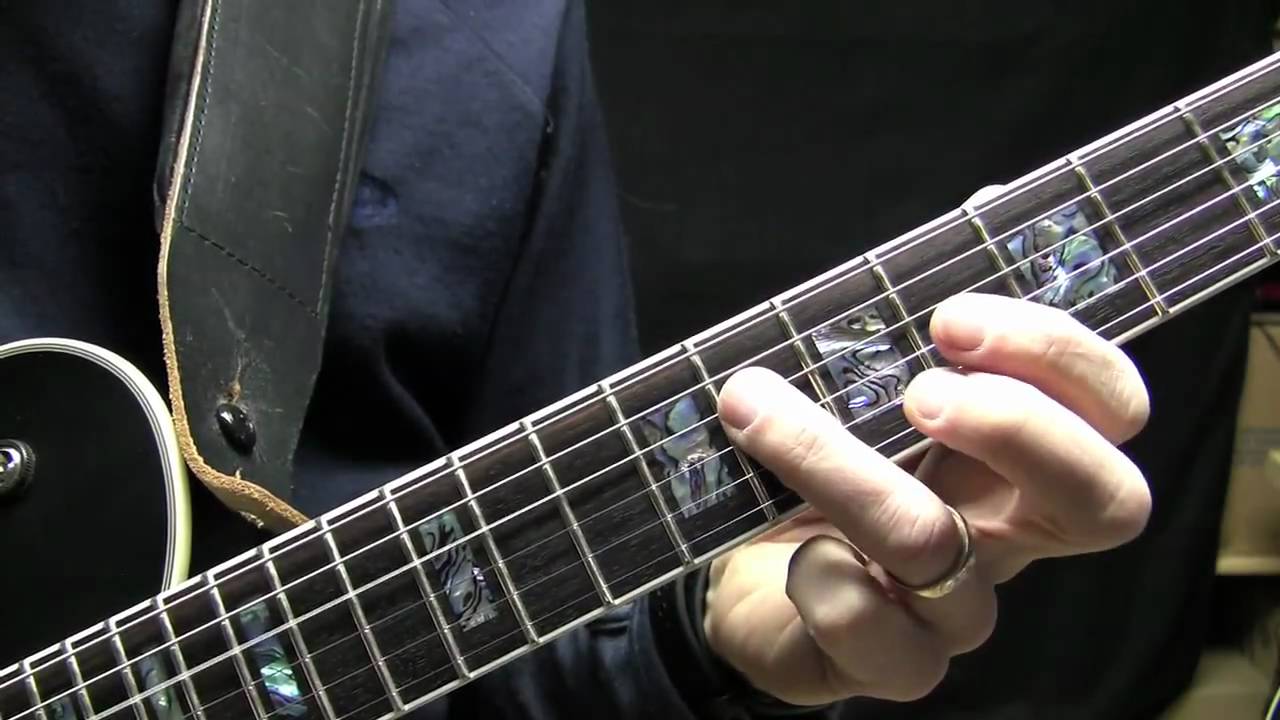www.dolphinstreet.com Facebook Page www.facebook.com Here is a free blues guitar lesson for how to play a shuffle rhythm, as well as 2 note chords (dyads). Sign up on my website and get free guitar lessons via email for over a year’s time! Facebook Page: www.facebook.com
You may also like
Learn how to play blues slide guitar open G tuning lesson on a Fender Stratocaster
Added by Admin 11 years ago
919 Views0 Comments0 Likes
www.nextlevelguitar.com click this link to check out our 2-hour instructional DVD on Delta & Post War Slide Blues Guitar Video Rating: 4 / 5
Jump Blues Guitar Lick Lesson Brian Setzer Style
Added by Admin 11 years ago
11.26K Views50 Comments0 Likes
www.dolphinstreet.com Short little Brian Setzer style rockabilly or jump blues lick, by Robert Renman The Brian Setzer Orchestra performing "Boogie Woogie Santa...
Advanced Blues Guitar Lesson : Playing Over the I IV V
Added by Admin 11 years ago
5.04K Views26 Comments0 Likes
REQUESTS GO HERE www.guitarjamz.com THE WEBSITE!! www.guitarjamz.com NEW CHANNEL! http FOLLOW ME where I update first at www.twitter.com also would love it if you subscribed to my PERSONAL P...
Rhythm elements into Blues guitar lesson clean strat Pentatonics chords licks solo
Added by Admin 11 years ago
4.08K Views23 Comments0 Likes
www.nextlevelguitar.com click NOW for a FREE Video guitar lesson that is not on YouTube & a FREE Ebook from Next Level Guitar.com Video Rating: 4 / 5









awesome
Cool man;)
Great !!!
How can you NOT like this lesson?
this helps a bunch
thanks!
Hello can show video tutorial Johnny Winter – Johnny Guitar? Thank you!
what is make/model of that guitar?
I’m subing..and I’m psyched. Can’t wait to get back home from work and learn some new tricks!
wow cool…! ^_^
Excelente trabajo, aprendi mucho!! Gracias
the one i played totally put the Roland that was sitting next to it to shame. and the Roland was twice as big and had double the wattage, and the Jet City was able to keep tone at higher volumes and didnt break up the sound. made a beliver out of me thats for sure.
yeah Jet City is great! I posted that comment last year, and since then I do own a wonderful 20 watt head with a 2×12 cab that I stand vertically. It’s beautiful, simple, durable, variable, and always has a great tone. That’s what I love about it!
i played through one of those for the first time the other day, and i gotta say, i was very impressed. the tones were like butter, but still had fullness to it.
well not sure if i completely understood what you meant, but i think you could just make the things easier by seeing a modulation in each section.
Each section would be based on the Myxolidian scale, very common in blues, of the bass note
In the first section (bass: A) he is playing Em D C#m (which would be V-IV-III if we think it as A myxolidian), while in the second section (bass: D) he is going Am G F#m (V-IV-III in D myxo)
I’ve really never studied harmony, so please correct me if i’m wrong
Great production vales. The tabs overlay is well implemented and helpful!
(cont’d)
But how does the first dyad, 9/8, fit in? Is it perhaps a fragment of the A7 chord with its root on the 7th fret of the 4th string (i.e. a D-shape Dominant 7th)? That would make a mini-chord progression of I7-IV-I.
Hope that all makes sense to everybody (I am assuming a basic knowledge of harmony) and that the question isn’t a dumb one.
And damn YouTube’s 500 char limit on comments!
(cont’d)
Similarly, I can see that the second dyad (in this instance, 7/7) might relate to a D Major barre chord with the root on the 5th string…which would equate to a IV chord within the mini-chord progression. So far, so familiar: this dyad pairing, often suggesting a kind of pendulum between the I and IV chords, is ubiquitous in blues and rock. (tbc)
(cont’d)
Over the A chord, the dyad progression goes 9/8, 7/7, 6/5 on the G and B strings respectively. Now, I can see that the final dyad, 6/5, fits within an A Major barre chord with a 6th string root (E-shape barre chord), and this makes perfect harmonic sense: the mini-chord progression resolves to the chord over which it is being played. (tbc)
Great lesson, Robert. I’d be interested to understand a little more, though, about what is going on harmonically with these dyads (or ‘miniature chords’, as you call them).
This is a basic I-IV-V progression in the key of A, with the same pattern of three dyads (mini-chords) played over each chord in the main progression (A, D and E). Kind of a progression-within-a-progression, right?
But how do the mini-chords relate to each other? (tbc)
awesome man thanks alot
You’re a great teacher and I’m really getting into all of your lessons. Many thanks from NZ!
Another superb job Robert
Awesome job!